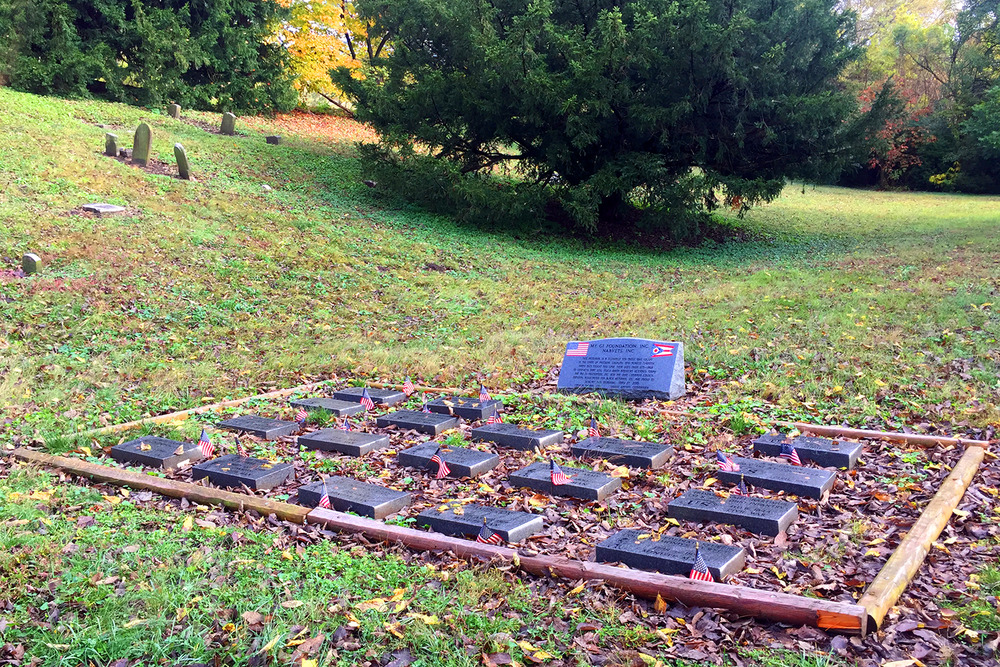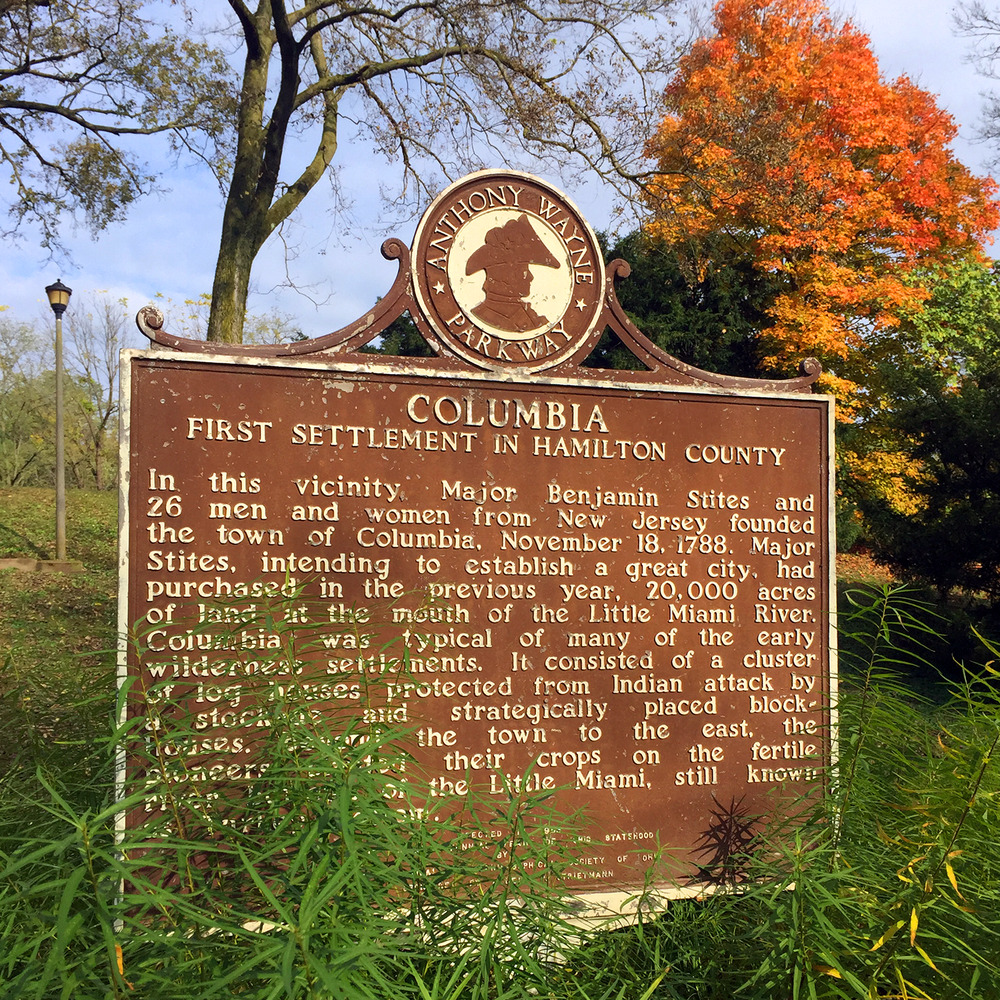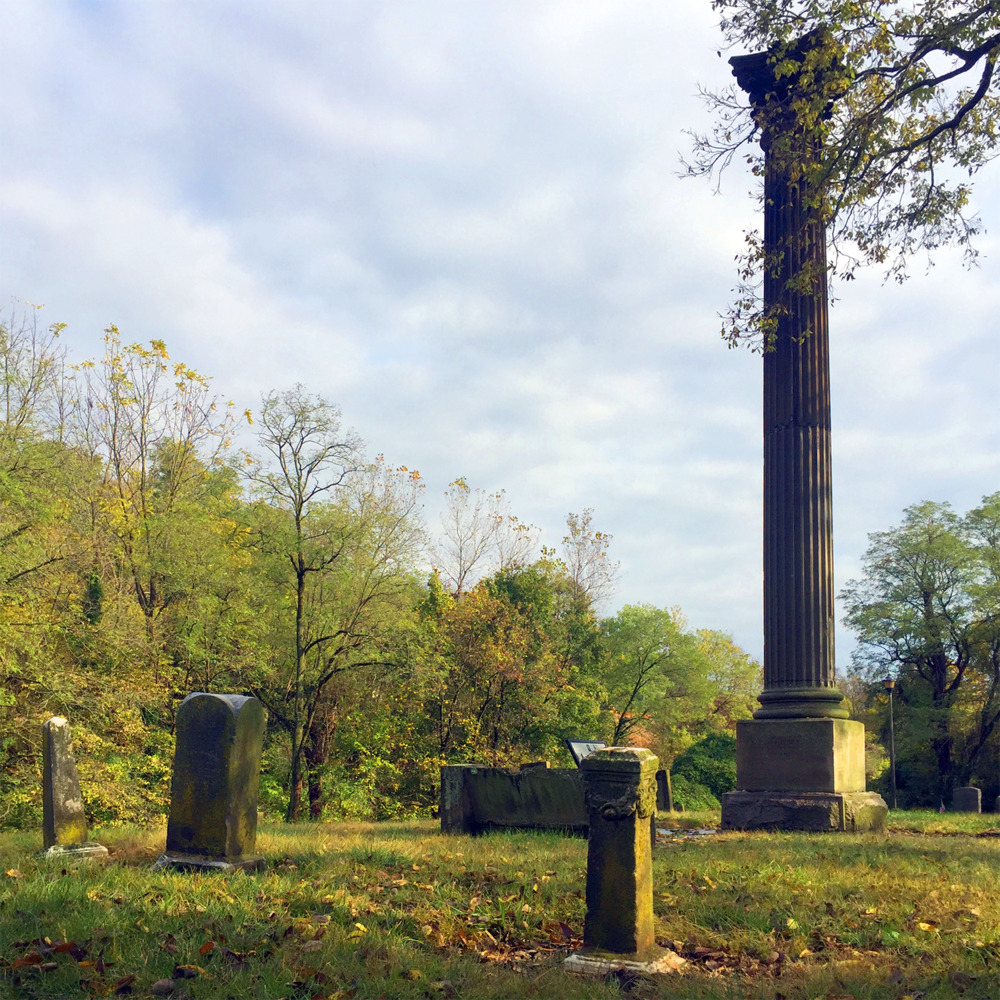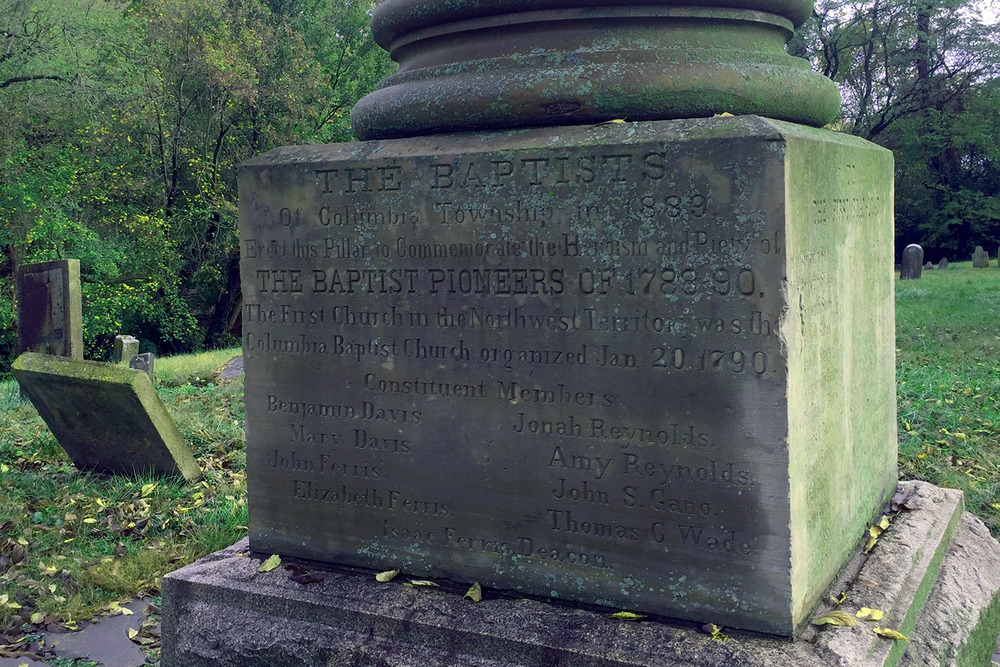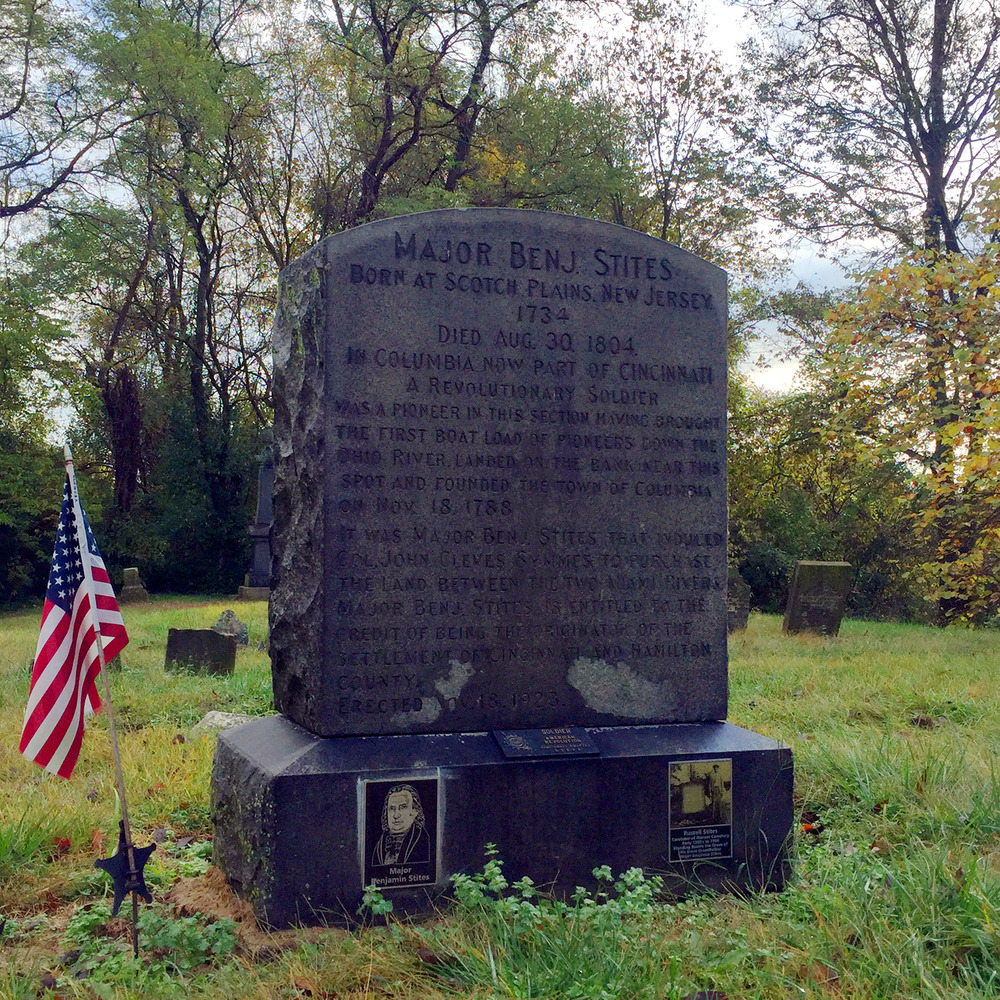Pioneer Memorial Cemetery
Oldest Graveyard in Hamilton County and Burial Site of Black Veterans
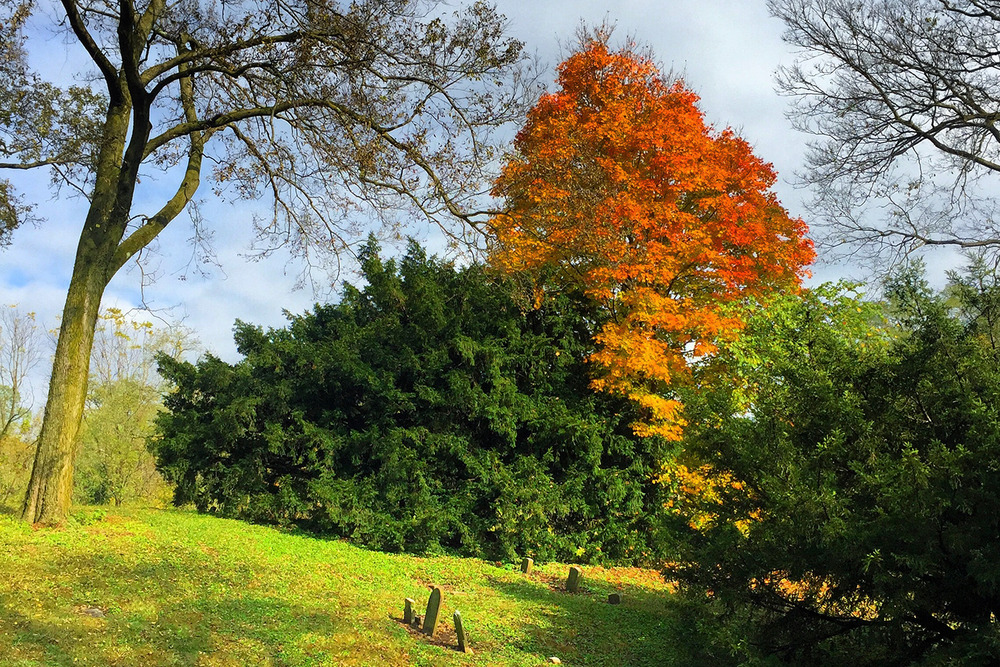
Located on a small hill near Lunken Airport and maintained by the Cincinnati Parks Department, Pioneer Memorial Cemetery is the oldest graveyard in Hamilton County. It sits on a plot of land once occupied by Columbia Baptist Church, founded in 1790, just a few years after settlers landed in Columbia (now known as the Cincinnati neighborhood of Columbia-Tusculum).
In 2019, a joint venture between the National Association for Black Veterans Chapter #68 and the My GI Foundation resulted in 18 new headstones and a large monument honoring the Black veterans from 1790 to 1867 who are buried here.
In the graveyard are dozens of tombstones, some dating back to the 1700s. This site is notable for being the resting place for several American Revolutionary and Civil War soldiers. It is believed to be the only existing landmark remaining from the first European settlement in the region.
Burials probably began on this site at least as early as 1790, the date of the founding of Columbia Baptist Church. The oldest stone now existing in the cemetery is that of five-month old Phebe Stites, daughter of Captain Hezekiah Stites. She passed away on 14 Mar 1797.
On-site plaques help to explain the significance of this site to the Baptist denomination. The first meetinghouse of the Columbia Baptist Church, the oldest in Ohio, was located here. Stephen Gano led the organization of Columbia Baptist Church and was its first preacher, while his brother John S. was a charter member. In 1792, this was also the site of the first Baptist ordination service in the Northwest Territory, led by their father, John Gano.
Early settler John Smith became the first full-time pastor at Columbia Baptist Church. He was a leading proponent for Ohio’s Statehood, a member of the first Territorial Assembly in 1798 and Ohio’s first US Senator, serving in that capacity from 1803 until 1808. During that time, he became a personal friend and advisor to President Thomas Jefferson.
A tall Corinthian pillar taken from the old Post Office building, which was erected in 1856, was placed here in 1888 after the post office was razed.
There is a memorial to Major Benjamin Sites (1734-1804), who founded the town of Columbia, which was dedicated in 1923.
What does Mad Anthony St. in Northside have in common with Ft. Wayne, IN? They’re both named after Anthony Wayne, whose fiery brand of military service during the American Revolutionary War earned him the “mad” nickname. He later led an expedition during the Northwest Indian War, in 1794 mounting an assault on the Indian confederacy at the Battle of Fallen Timbers in Maumee, OH, which was a decisive victory for the US forces that ended the war. The following year, Wayne negotiated the Treaty of Greenville between the tribal confederacy and the US, which gave gave most of Ohio to the United States, clearing the way for the state to enter the Union in 1803.
In 1944, on the 150th anniversary of the signing of the Treaty of Greenville, the Anthony Wayne Memorial Joint Legislative Committee was formed to create a system of parks and shrines connected by roads to commemorate the events that led to Ohio’s statehood. By 1957, in cooperation with the Ohio Department of Highways, 450 miles of roads in 23 counties displayed distinctive parkway signs, stretching from Cincinnati to Toledo. Most of the marked roads followed the routes of the three Indian-fighting armies or led to the sites of battles and log fortifications built by the troops. The Anthony Wayne Parkway Board disbanded in 1993; one of the few remaining markers is at the entrance to Pioneer Memorial Cemetery.
In 1958, it was discovered that this location was once the site of a Native American village. Due to the presence of the cemetery, no excavation has ever been conducted there. All that is known about the site is that it was inhabited during the Woodland period (800 BC-1200 AD), which is generally marked by the appearance of pottery, cultivated plants, settled village life, mound building, and a quicker pace of cultural change.
Ohio’s earliest gardener-farmers lived in small communities of two or three households. By the Late Woodland period, villages were larger, possibly occupied by up to 100 people. In the Ohio Valley, pre-contact Native Americans grew a variety of local plants including squash, sunflower, erect knotweed, lamb’s quarter, and maygrass.
Pioneer Memorial Cemetery was neglected for years until Frederick L. Payne, then Supervising Horticulturalist for the Park Board, began a restoration project in 1967. He also prepared a two-volume record of the history of the cemetery. This document, now housed at the Cincinnati Historical Society, lists all those persons who could be identified as buried there since 1790 and includes photographs of all markers existing during the restoration period.
Payne retired as Director of Parks in 1987. In appreciation of his contributions, a simple colonial garden is planted near the entrance to the cemetery.
Pioneer Memorial Cemetery is listed on the National Register of Historic Places under its historic name of Columbia Baptist Cemetery. It consists of 2.2 acres at 333 Wilmer Ave., just north of Davis Lane.
Images

